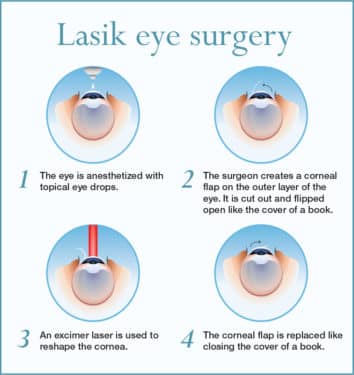What Are The Distinctions And Similarities Between SMILE Eye Surgery And LASIK And PRK?
What Are The Distinctions And Similarities Between SMILE Eye Surgery And LASIK And PRK?
Blog Article
Write-Up By-Humphries Vincent
If you've been thinking about SMILE eye surgical procedure, you might wonder how it stacks up against LASIK and PRK. Each treatment has its own set of benefits and considerations. From quicker recuperation times to prospective dangers, there are vital distinctions you must recognize before deciding. Understanding these differences will certainly assist you make an informed option that aligns with your certain needs and assumptions. Curious to know more regarding how these procedures compare thoroughly? Keep exploring to acquire an extensive understanding of SMILE, LASIK, and PRK.
SMILE Eye Surgical Procedure Summary
If you're considering SMILE eye surgical treatment, you'll discover it to be a minimally invasive procedure with a fast healing time. During SMILE (Little Laceration Lenticule Removal), a laser is used to produce a tiny, precise laceration in the cornea to get rid of a small item of tissue, reshaping it to correct your vision. Laser Eye Surgery Age varies from LASIK, where a flap is developed, and PRK, where the outer layer of the cornea is totally removed.
Among the key benefits of SMILE is its minimally invasive nature, leading to a faster healing procedure and less pain post-surgery. The recuperation time for SMILE is reasonably quick, with lots of people experiencing boosted vision within a day or two. https://thenewdaily.com.au/life/wellbeing/2016/03/05/lasik-surgery/ makes it a popular selection for those seeking a convenient and efficient vision modification procedure. Furthermore, SMILE has been shown to have a reduced risk of completely dry eye syndrome compared to LASIK, making it a beneficial alternative for people concerned about this possible side effect.
Differences In Between SMILE, LASIK, and PRK
When comparing SMILE, LASIK, and PRK eye surgeries, it's important to recognize the distinct techniques used in each procedure for vision correction.
SMILE (Small Laceration Lenticule Extraction) is a minimally intrusive treatment that involves creating a little incision to draw out a lenticule from the cornea, reshaping it to deal with vision.
LASIK (Laser-Assisted Sitting Keratomileusis) entails creating a thin flap on the cornea, utilizing a laser to improve the underlying cells, and afterwards repositioning the flap.
PRK (Photorefractive Keratectomy) gets rid of the outer layer of the cornea before improving the tissue with a laser.
The major difference lies in the way the cornea is accessed and treated. SMILE is flapless, making it an excellent option for individuals with slim corneas or those involved in call sports. LASIK provides fast aesthetic healing because of the flap creation, yet it may pose a higher threat of flap-related issues. PRK, although having a longer recuperation duration, avoids flap-related problems entirely.
Recognizing these variances is vital in selecting the most suitable procedure for your vision adjustment requirements.
Pros and Cons Contrast
To assess the advantages and disadvantages of SMILE, LASIK, and PRK eye surgeries, it's vital to think about the certain benefits and potential restrictions of each treatment. SMILE surgical treatment offers the advantage of a minimally invasive procedure, with a smaller sized incision and potentially quicker healing time compared to LASIK and PRK. It likewise decreases the risk of dry eye post-surgery, a typical negative effects of LASIK. Nonetheless, SMILE might have limitations in dealing with greater degrees of nearsightedness or astigmatism contrasted to LASIK.
LASIK surgery gives rapid aesthetic recovery and marginal discomfort throughout the procedure. It's very reliable in treating a wide variety of refractive mistakes, including nearsightedness, hyperopia, and astigmatism. Yet, LASIK carries a danger of flap complications, which can affect the corneal structure.
PRK eye surgery, while not as prominent as LASIK, avoids producing a corneal flap, minimizing the risk of flap-related issues. It's suitable for people with thin corneas or irregular corneal surface areas. Nonetheless, PRK has a longer healing time and might entail more discomfort during the healing procedure.
Conclusion
So, when it involves choosing in between SMILE, LASIK, and PRK, consider it like selecting the best pair of footwear. SMILE resembles a streamlined, comfy pair of tennis shoes - fast and easy.
LASIK is extra like fashionable high heels - showy and fast, however with some prospective dangers.
PRK is like strong hiking boots - trustworthy and resilient, yet calling for a bit even more effort and time.
Inevitably, the very best selection depends upon your specific needs and choices.
